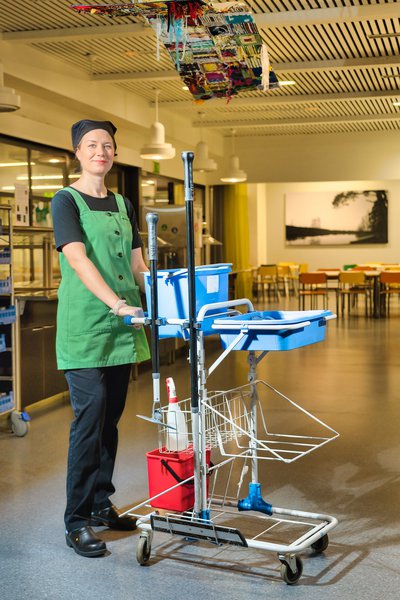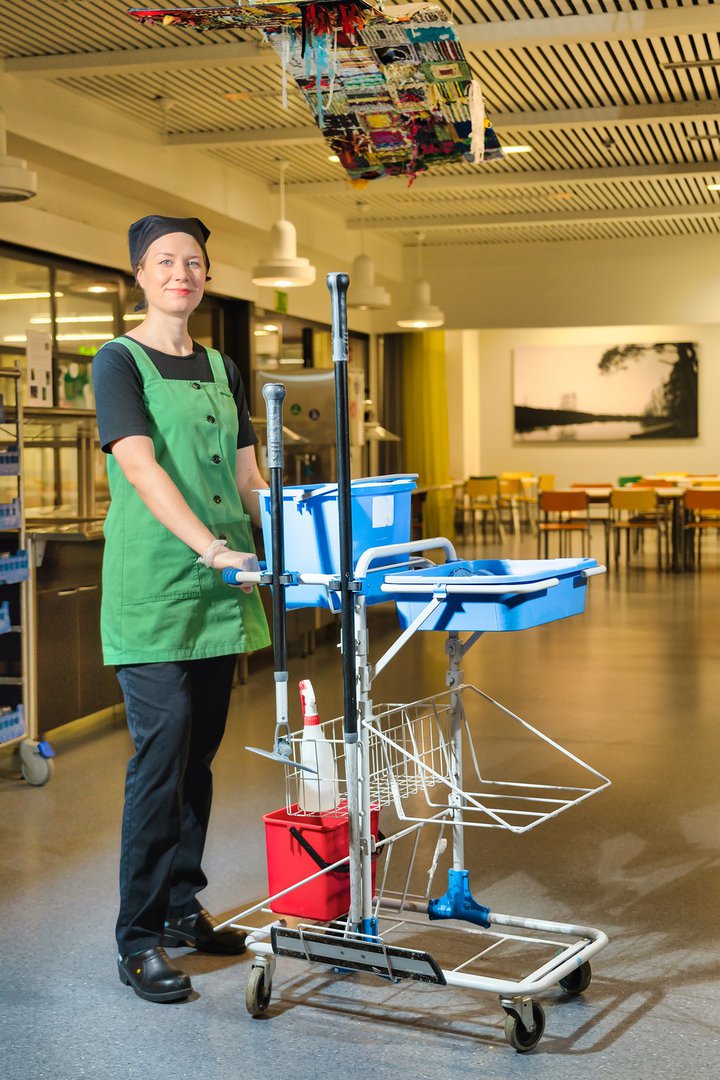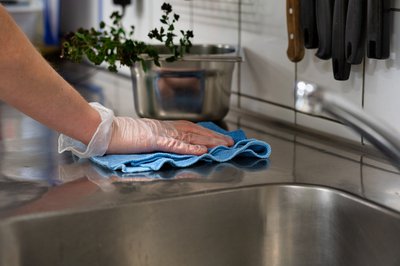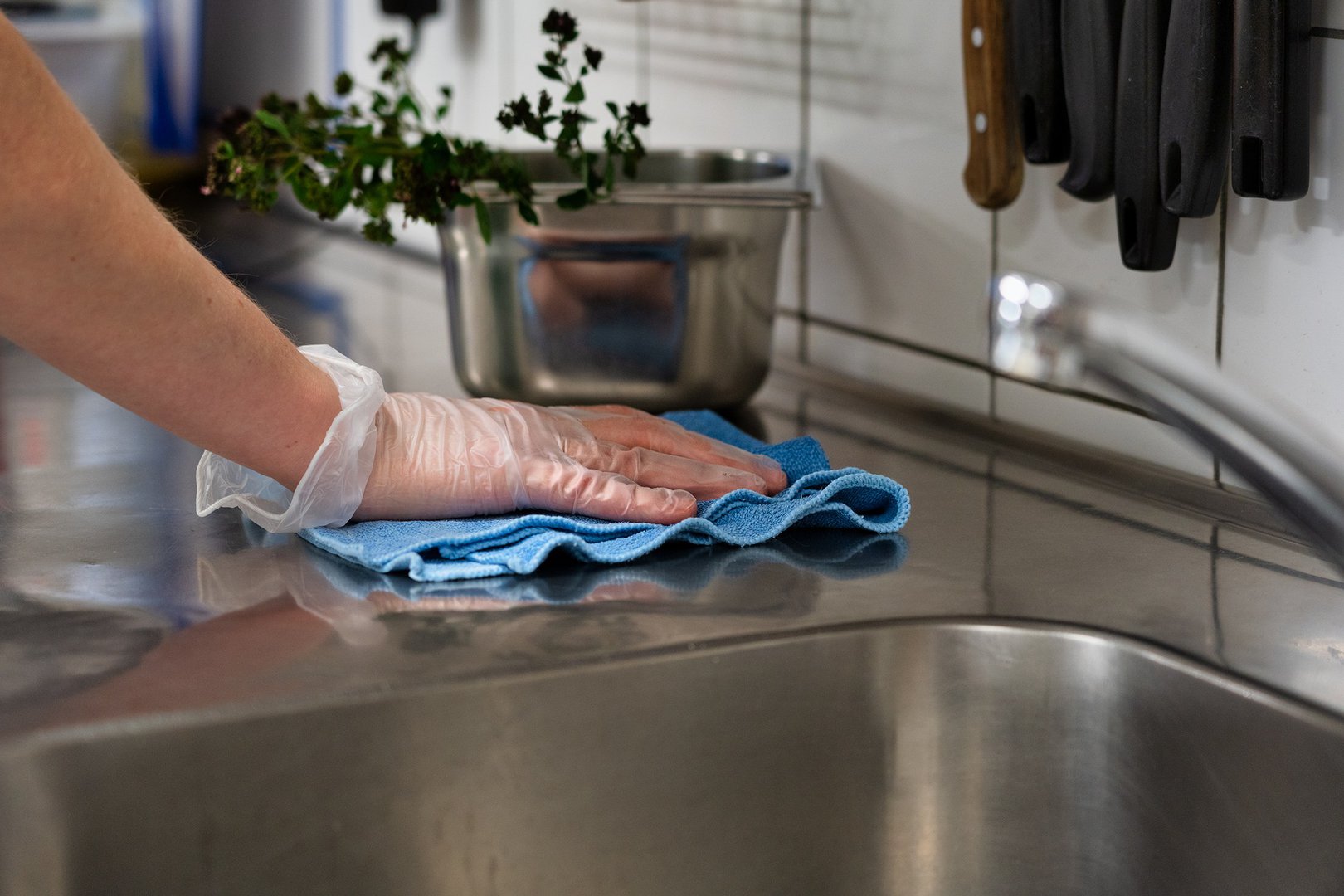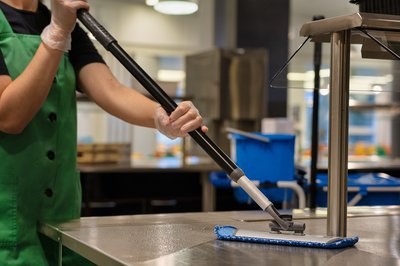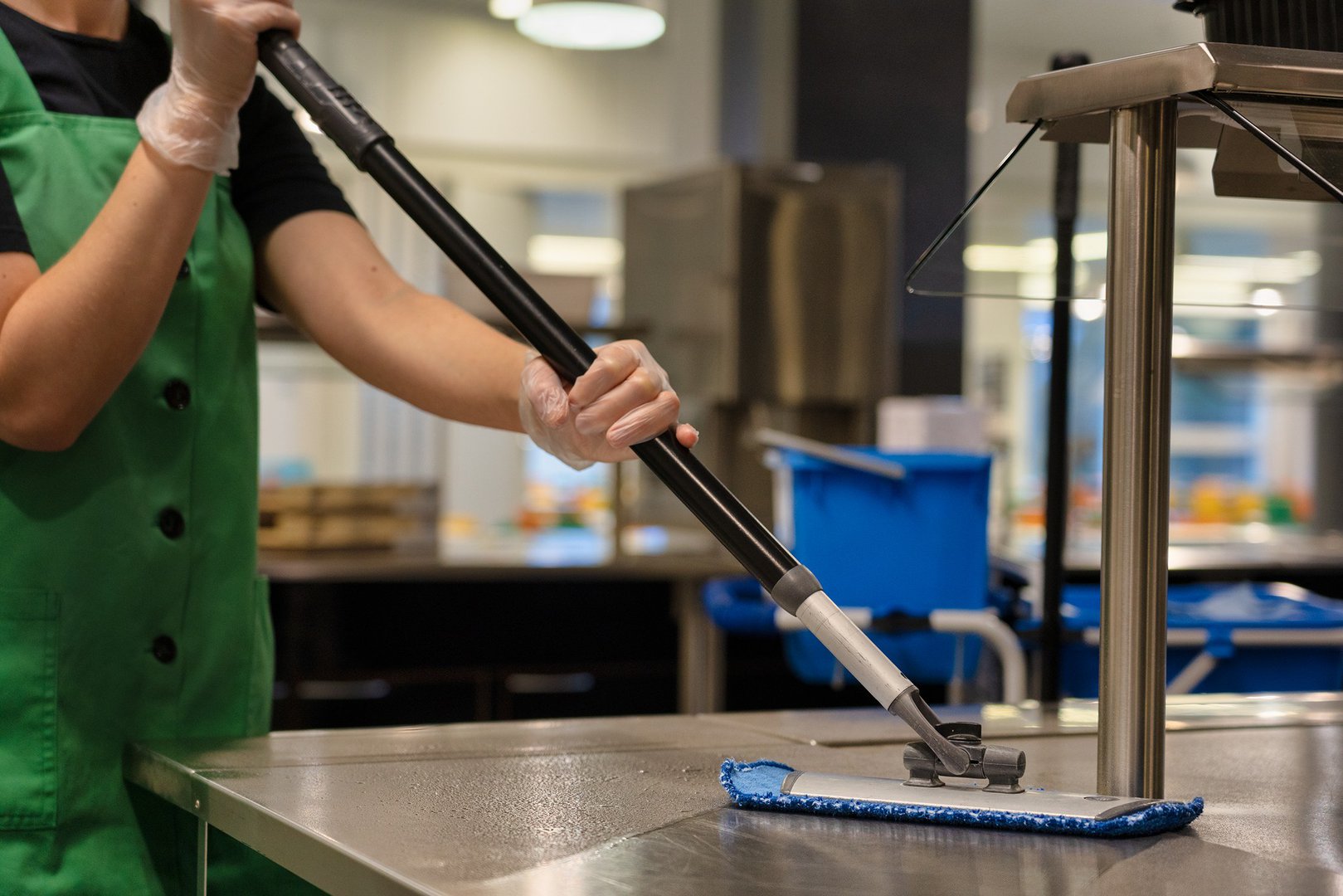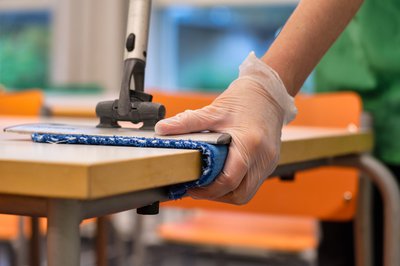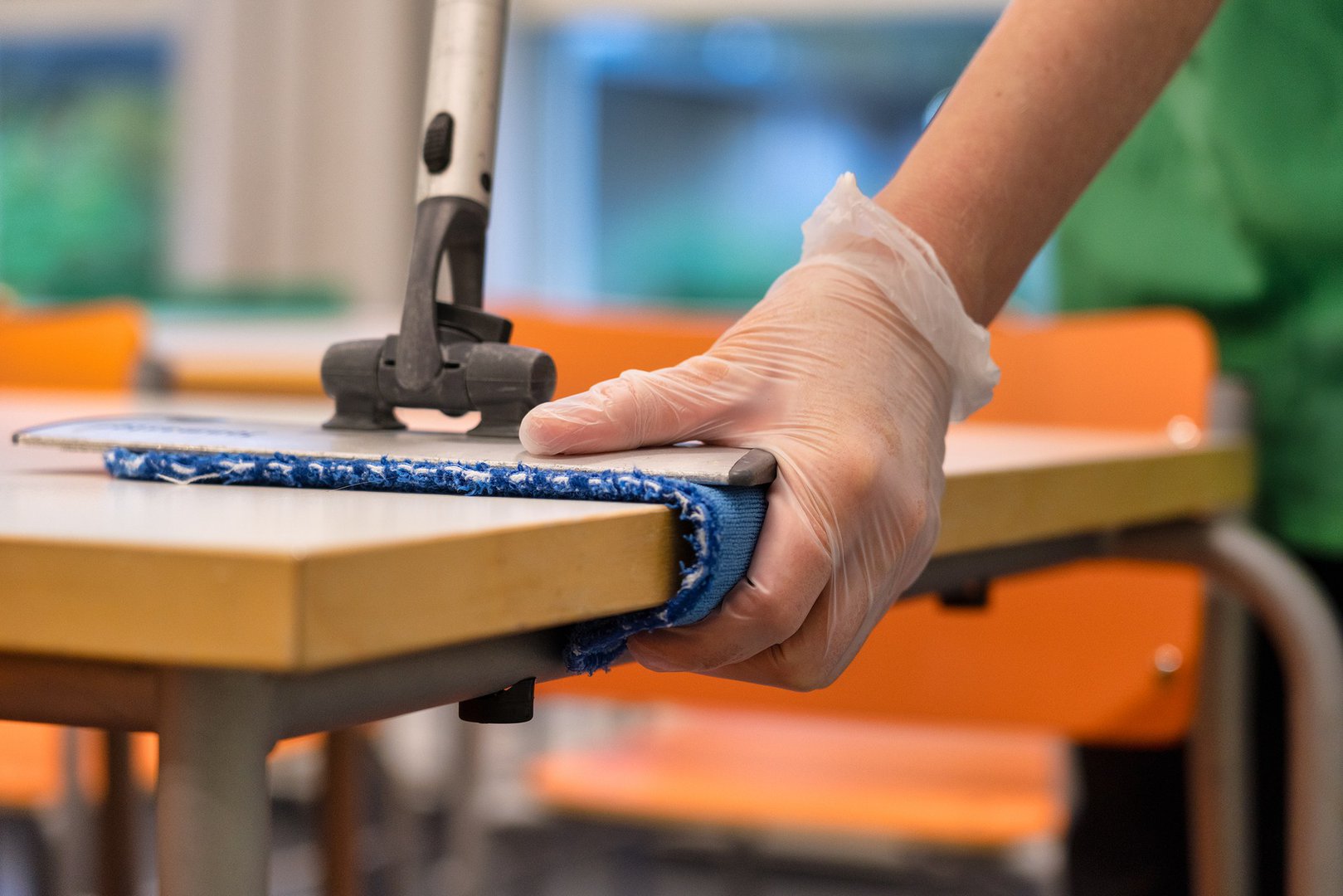Necessary Steps
- Making the decision for waterless cleaning as a mode of operation is the first step.
- Motivate and familiarize personnel with the new way of working.
- Make microfiber cloths, adjustable mop arms and gloves (possibly a cleaning trolley for this equipment) available.
- Plan the cleaning in terms of surface area and hygienic levels (e.g. counters, tables, chairs, floor) and test the timing for intended work.
- Microfiber cloths can be of different colors (color coding) according to hygienic levels (e.g. green = cleanest, then blue, red and yellow).
- Schedule the mechanical washing of the microfiber cloths, if possible, so that the cloths are at a suitable moisture for use.
- Handle cleaning equipment hygienically so that the microfiber cloths are always washed in a washing machine and protective gloves are used to prevent the cloth from getting dirty and to protect the skin of the hands.
- Take the cloths directly from the wash, slightly moist when starting cleaning, or moisten the cloth manually with water or, if necessary, a detergent solution.
- Use a scrub brush and detergent for greasy objects and floor drains.
- Schedule the cleaning of the floor so it does not interfere with other activities.
- Clean floor surfaces with a floor care machine or in smaller areas with microfiber mops.
More Issues To Consider
- Often, spaces of food and meal production are washed with plenty of water and detergents, allowing also bacterial contamination and growth. Waterless cleaning refers to cleaning with moist, absorbing and rubbing cloths, which are washed after use to be re-used.
- The same cloths can be used in hygienically descending order during the same cleaning route, such as food counter > table surface > chair surface.
- While the microplastics are a common problem, most of the particles – also from microfiber cloths – are detained at the wastewater treatment plants. Alternatives like cotton cloths generate many different environmental impacts which compare with the ones due to microfibers.
- Good quality microfiber cloths endure for a long time and can be labelled by the Nordic Swan with strict environmental requirements.
- These microfiber cloths offer first-rate cleaning performance without the use of cleaning chemicals; Are durable (providing a long service life); Contain limited amounts of environmentally hazardous and harmful substances; Contribute to lowering emissions to water and the air; Are gentle on the surface being cleaned.
